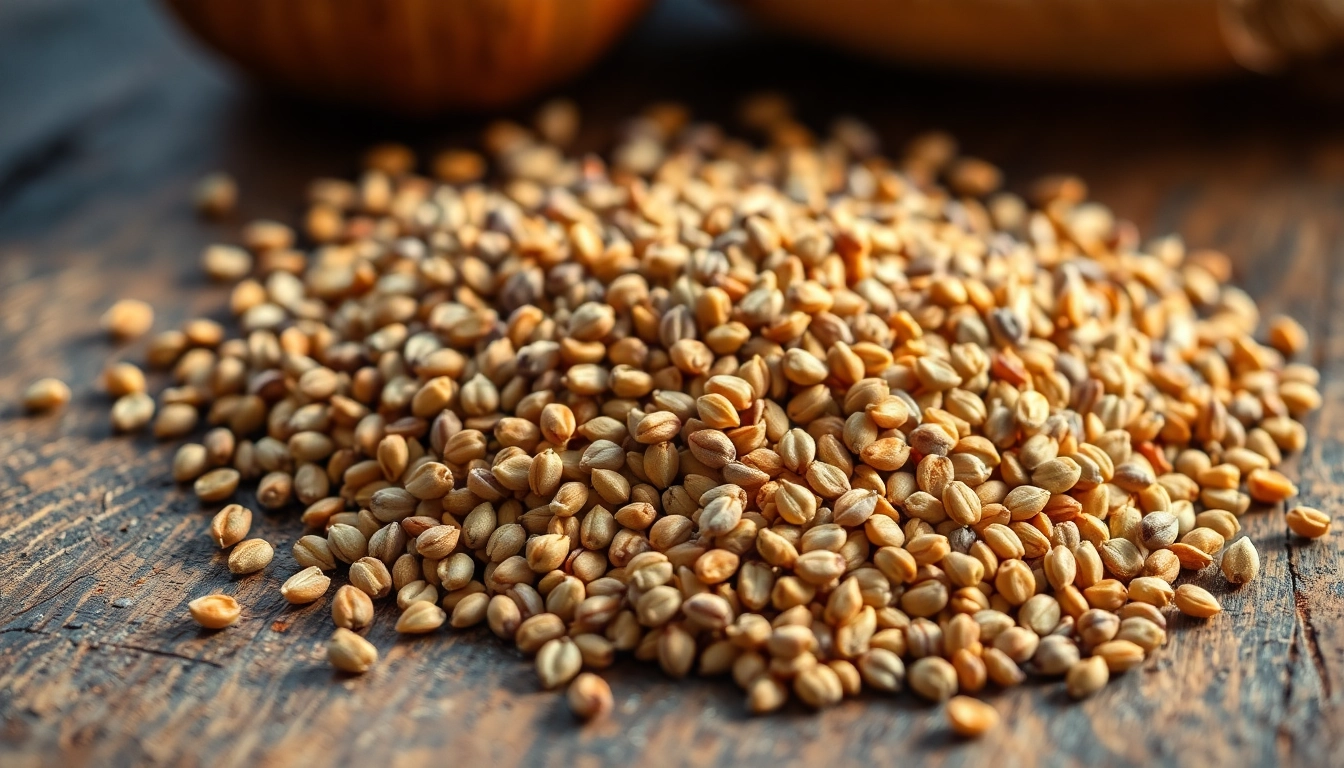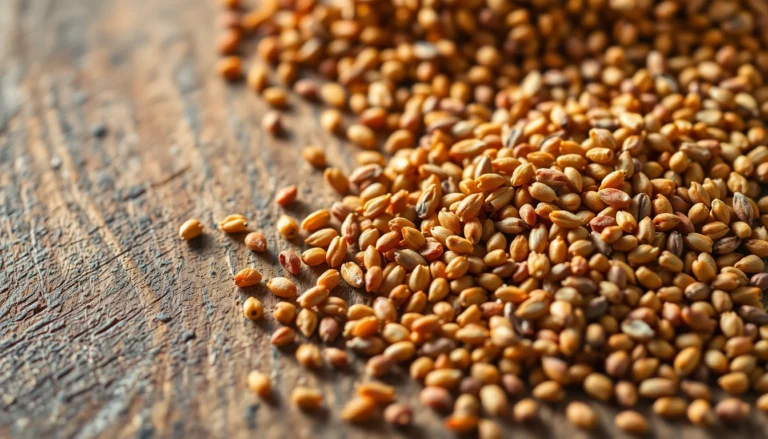Mastering Cumin Seeds: A Detailed Guide for Quality, Procurement, and Integration
Cumin seeds are an quintessential spice cherished worldwide for their warm, earthy aroma and distinctive flavor. As a fundamental ingredient in culinary traditions from Indian curries to middle eastern dishes, cumin seeds hold a significant place in global cuisine and food manufacturing. For food producers, exporters, and culinary enthusiasts alike, understanding the various aspects of cumin seeds—from quality indicators and sourcing to usage and market trends—is vital to harnessing their full potential. At SpiceNest, we pride ourselves on being a leading manufacturer and exporter of authentic, certified cumin seeds that meet international quality standards, ensuring superior flavor and safety for our clients worldwide.
Understanding Cumin Seeds: Types, Quality, and Uses
Different Varieties of Cumin Seeds Available in the Market
Cumin seeds come in diverse varieties, primarily categorized into two types: black cumin (Nigella sativa) and white or genuine cumin (Cuminum cyminum). The focus here is primarily on the latter, which is what most culinary and food manufacturing sectors demand. Within this category, you’ll find whole cumin seeds that vary based on regional cultivation, harvesting techniques, and processing methods. Common varieties include Indian, Syrian, and Moroccan cumin, each imparting slightly different flavor profiles—ranging from more pungent to milder nuances. These varieties are distinguished by seed size, color, aroma intensity, and oil content.
For example, Indian cumin is renowned for its robust aroma with high oil content, making it ideal for flavorful spice blends and seasoning applications. Syrian cumin often exhibits a milder flavor with a slightly earthy undertone, suitable for delicate recipes. When selecting cumin seeds, understanding their origin and variety helps match their properties to specific culinary or industrial applications.
How to Identify Authentic and High-Quality Cumin Seeds
Authentic high-quality cumin seeds possess specific characteristics that distinguish them from subpar or adulterated products. The key indicators include authentic aroma—rich and earthy without any artificial scent—the uniformity in size and color, and a fresh appearance. High-quality cumin seeds exhibit a dark brown or beige coloration with a slightly wrinkled surface, indicative of proper curing and drying.
Moisture content plays a critical role; well-dried seeds with low moisture avoid mold growth and ensure longer shelf life. A simple test involves crushing a few seeds; quality seeds release their characteristic aroma instantly and uniformly. Certification labels such as ISO, HACCP, and organic certifications mark the product’s adherence to international safety and quality standards. When sourcing, it is crucial to choose trusted manufacturers like SpiceNest, who provide traceability and certification to guarantee authenticity.
Primary Uses of Cumin Seeds in Cooking and Food Industry
Cumin seeds have versatile applications spanning home cooking to large-scale food manufacturing. In kitchens, they are used whole or ground to add depth and warmth to spice blends, curries, soups, and salads. Ground cumin is preferred for rubs, marinades, and baked goods due to its uniform flavor release.
In the food industry, cumin seeds are processed into powders, extracts, and flavor concentrates for sauces, snacks, ready-to-eat meals, and seasoning mixes. Their essential oils are extracted operationally for utilization in perfumery, pharmaceuticals, and flavoring agents. The seed’s antimicrobial and antioxidant properties also enhance shelf life and food safety in processed foods.
Benefits of Choosing Certified Cumin Seeds from Trusted Manufacturers
Health Advantages and Nutritional Profile
Certified cumin seeds are rich in essential nutrients, including iron, magnesium, calcium, and dietary fiber. They contain bioactive compounds such as cuminaldehyde, thymol, and flavonoids, which contribute to their antioxidant, anti-inflammatory, and antimicrobial properties. Regular consumption of high-quality cumin seeds can boost immunity, aid digestion, and promote overall well-being.
Certifications and Quality Standards to Look For
When selecting cumin seeds for commercial use, certifications such as ISO 22000, HACCP, Organic Certification, and Fair Trade ensure that products meet stringent safety and quality benchmarks. These standards verify that the seeds are free from adulteration, pesticides, and contaminants.
How Cumin Seeds Enhance Flavor and Food Value
Cumin seeds’ unique flavor profile adds richness and complexity to dishes, elevating the overall sensory experience. Their aromatic oils not only contribute to flavor but also serve as natural preservatives, helping maintain the integrity and nutritional value of processed food products. Using certified cumin seeds guarantees consistency in flavor and quality, which is vital for brand reputation and consumer satisfaction.
Guidelines for Buying Cumin Seeds in Bulk: Tips and Best Practices
Where to Source Wholesale Cumin Seeds Locally and Internationally
Sourcing wholesale cumin seeds requires a strategic approach: evaluate suppliers based on quality certifications, production capacity, and reputation. Leading manufacturers like SpiceNest facilitate direct procurement, ensuring traceability and adherence to international standards. Domestic markets in India offer competitive prices and reliable quality, while international trade hinges on certifications, packaging, and logistics efficiency. Attending trade fairs and exhibitions—like Biofach and Food India Expo—can help establish trusted B2B relationships.
Pricing Trends and Cost-Effective Purchasing Strategies
The pricing of cumin seeds is influenced by crop yields, climatic conditions, and global demand. Prices tend to fluctuate seasonally; thus, securing long-term contracts with suppliers or buying in bulk during harvest seasons can reduce costs. Negotiating payment terms and ensuring quality compliance are critical to maximizing value and avoiding costly rejects.
Packaging, Storage, and Shelf Life Management
Proper packaging—vacuum-packed, heat-sealed, or nitrogen-flushed—preserves aroma, flavor, and freshness. Containers should be airtight, moisture-proof, and resistant to pests. Storing cumin seeds in cool, dry, and dark environments extends shelf life, reduces oxidation, and maintains quality over several months. Maintaining traceability and inventory management is essential for consistent supply and quality control.
Incorporating Cumin Seeds into Your Recipes and Product Line
Popular Culinary Dishes Using Cumin Seeds
Cumin seeds are integral to countless dishes: Indian curries, Mexican salsas, Middle Eastern kebabs, and North African tagines. They are typically toasted before grinding, which enhances their nutty aroma. Additionally, cumin can be used in spice blends like garam masala, ras el hanout, and taco seasoning, offering aromatic depth and authenticity.
Innovative Food Products with Cumin Seeds for Export
Modern food innovation involves embedding cumin seeds into ready-to-eat snacks, soups, seasonings, and health-centric products like cumin-flavored teas and supplements. Such products are tailored for health-conscious markets emphasizing organics, hydration, and functional foods. Proper processing and standardized quality control, facilitated by trusted suppliers like SpiceNest, ensure the consistency needed for international markets.
Tips for Marketing and Promoting Cumin Seed Products
Emphasize the authenticity, certification, and regional origin of your cumin seeds to attract discerning consumers. Highlight their health benefits, purity, and eco-friendly production practices in marketing campaigns. Participating in trade shows, online B2B platforms, and collaborative brand stories enhances visibility and credibility globally.
Future Trends and Market Insights for Cumin Seeds Industry
Emerging Markets and Consumer Preferences
Growing awareness of organic and clean-label products boosts demand for certified cumin seeds in North America, Europe, and emerging Asian markets. Consumers increasingly seek traceability, health benefits, and sustainable sourcing, prompting producers to align with eco-friendly and social responsibility standards.
Advanced Processing and Packaging Technologies
Innovations like vacuum packaging, nitrogen flushing, and customized packaging sizes enhance product freshness and convenience. Powderization with micronization and encapsulation preserves aroma and medicinal properties, opening new avenues for functional foods and nutraceuticals.
Environmental and Sustainability Considerations in Cumin Seeds Production
Sustainable farming practices—such as crop rotation, organic cultivation, water conservation, and fair trade—are increasingly prioritized. Certification bodies validate these efforts, influencing consumer choices. Companies like SpiceNest invest in eco-friendly production to meet global sustainability standards, balancing profitability with environmental responsibility.






